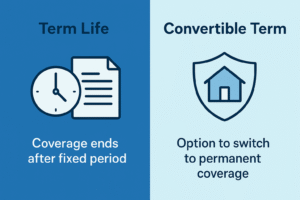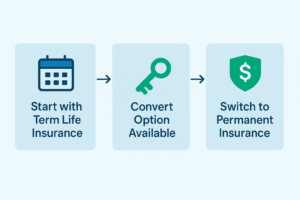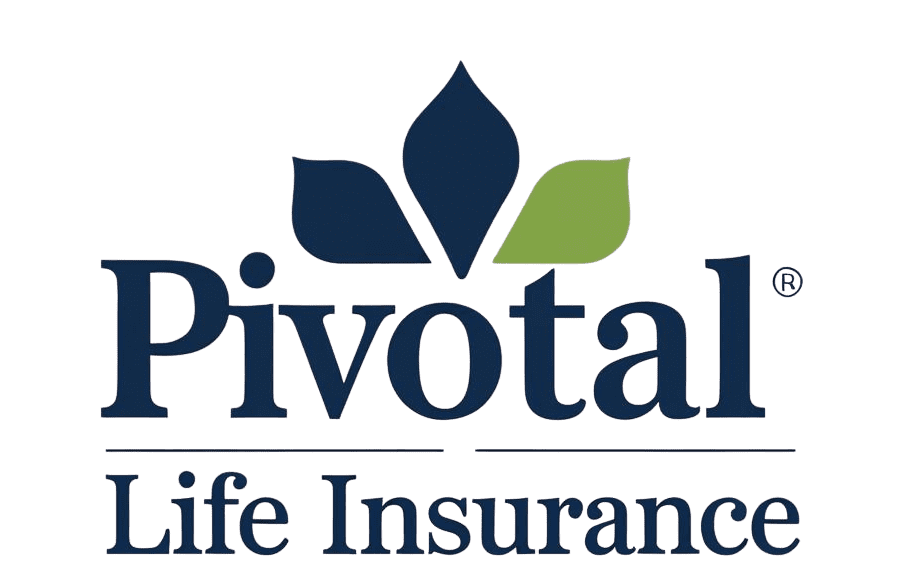Life insurance can feel confusing, especially when every option promises peace of mind. Among those options, one policy often sparks curiosity: convertible term life insurance.
If you’ve heard the term and wondered what it really means, you’re not alone. Many Americans search for answers about convertible term life insurance and its pros and cons because they want protection now, with flexibility for the future.
Here’s the good news: you don’t need a finance degree to understand it. By the end of this guide, you’ll not only know the benefits of convertible life insurance but also its downsides. More importantly, you’ll see if it fits your life stage, your goals, and your family’s security.
What Is Convertible Term Life Insurance?

Convertible term insurance is a type of term life insurance that allows you to switch your temporary coverage into permanent coverage later, usually without taking another medical exam. In plain English, it’s like renting a house today with the option to buy it in the future if you decide you’re ready.
People are often curious about what convertible term life insurance is and how it is different from standard term life. The difference lies in the convertible feature. Regular term life covers you for a fixed period, say 20 years, then ends. With a convertible term, you can convert to a permanent policy (such as whole life or universal life) before your term expires.
This flexibility matters because life changes. You might start with limited needs and a tight budget, but later want lifelong coverage as your income grows or your health changes.
Key Benefits of Convertible Term Life Insurance
So, what are the benefits of convertible term life insurance? Here’s where this policy stands out:
No New Medical Exam Required
When you convert, you don’t need to re-qualify with a new medical test. That’s huge if your health declines later in life.Affordable Starting Point
Like standard term life, it starts cheaply. You can lock in coverage at a low cost when you’re young and healthier.Flexibility for Future Changes
You can adapt as your life evolves. Maybe you start with temporary coverage for a mortgage, then later switch to permanent coverage to leave a legacy.Builds Long-Term Security
Once converted, your permanent policy can accumulate cash value, giving you more financial options.
The Drawbacks You Shouldn’t Ignore
Of course, not everything shines. Let’s look at the cons of convertible term life insurance that often surprise buyers:
Higher Premiums After Conversion
Permanent insurance costs more. When you convert, your premiums will increase, sometimes significantly.Limited Conversion Window
Most policies only allow conversion within a set number of years (often the first 10–20 years of the term). Miss it, and the option disappears.May Not Need Permanent Insurance
Some families find they don’t actually need lifelong coverage. If your kids are grown and debts are paid, converting may not be worth it.Fewer Investment Returns Compared to Other Tools
Permanent policies build cash value, but usually slower than investments like IRAs or 401(k)s.
So, Is Convertible Term Life Insurance Worth It?
This is the million-dollar question: Is convertible term life insurance worth it? The answer depends on your personal situation.
It’s worth it if:
You want cheap protection now, with the option to upgrade later.
You’re concerned about future health issues that could make life insurance harder to get.
You like the idea of permanent coverage but can’t afford it today.
It might not be worth it if:
You only need coverage for a set period (like paying off a mortgage).
You have other investment vehicles for wealth building.
You prefer keeping your insurance and investing separate.
Breaking Down the Convertible Feature

What a term life insurance, and what is the convertible feature?
Here’s a simple answer:
Term life insurance is temporary, covering you for 10, 20, or 30 years.
The convertible feature is an option baked into some term policies that lets you switch to permanent coverage before your term ends.
Think of it as a safety net. You don’t have to use it, but if your circumstances change, it’s there.
Convertible Term Life Insurance vs Regular Term Life
When you compare convertible term life insurance pros and cons with standard term life, the main differences are:
Cost Today: Both are affordable, but the convertible term may be slightly higher.
Future Flexibility: Convertible gives you an upgrade path, regular term doesn’t.
Long-Term Planning: Regular term ends, convertible can evolve into lifelong coverage.
So, the choice comes down to your appetite for flexibility versus keeping costs low.
Convertible Term Life Insurance Pros and Cons
![]()
For quick clarity, here’s a simple comparison table:
| Pros | Cons |
|---|---|
| No new medical exam | Higher premiums after conversion |
| Affordable starting point | Limited conversion window |
| Flexibility for life changes | May not need permanent coverage |
| Builds long-term security | Cash value grows slowly |
FAQs
Q: What is convertible term life insurance?
A: It’s term life insurance with an option to switch to permanent coverage before the term ends.
Q: Is convertible term life insurance worth it?
A: It can be, especially if you worry about future health or want flexibility later.
Q: What are the benefits of convertible term life insurance?
A: Flexibility, affordability at the start, no medical exam when converting, and long-term security.
Q: What’s the catch?
A: Higher premiums after conversion and a limited time to make the switch.
Final Thoughts

Choosing life insurance isn’t easy. It’s about protecting people you love and preparing for a future you can’t fully predict. Convertible life insurance gives you the chance to start simple, stay affordable, and upgrade later if life throws you a curveball.
If you’re in your 20s, 30s, or 40s and still figuring things out, this policy can be a smart middle ground. But if you’re certain you only need temporary coverage, or you’re laser-focused on investment returns, a plain term policy might serve you better.
The bottom line: the pros and cons of convertible term life insurance boil down to flexibility versus cost. For many families, that flexibility is priceless.

